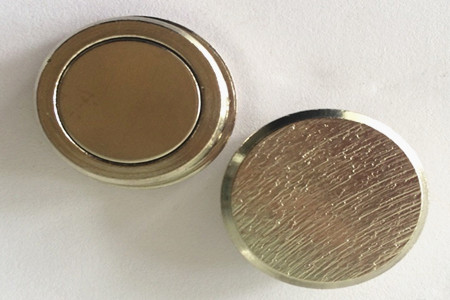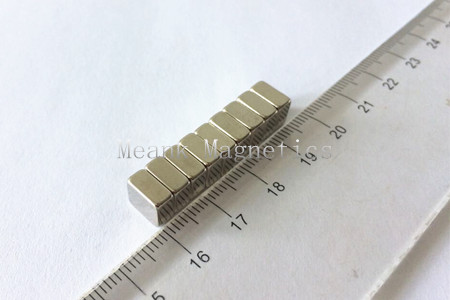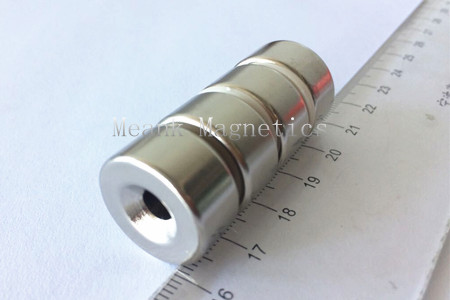The application of sintered NdFeB permanent magnet is mainly to use its magnetic properties. But due to the different use environment and conditions, except the requirements for magnetic properties, there are also requirements for mechanical properties and chemical properties. For example, some permanent magnets are used in high-speed rotating machinery, they have to withstand large centrifugal force, or are used in a vibration environment, or are subjected to extremely high acceleration (3g~5g), or when they are installed, they are subjected to stress. It may peel off, fall off the edge, fall off the corner or crack, etc., so it is natural to have requirements on the mechanical properties of the magnet.
The mechanical properties of materials generally include strength, hardness, plasticity and toughness. These mechanical properties have different physical meanings.
1. Strength refers to the maximum ability of a material to resist the destructive effects of external forces. Strength is divided into different forms of external force:
• Tensile strength (tensile strength) refers to the strength limit when the external force is tensile.
• Compressive strength refers to the strength limit when the external force is under pressure.
• Bending strength refers to the strength limit when the external force is perpendicular to the axis of the material, and the material is bent after the action.
2. Hardness refers to the ability of a material to locally resist hard objects pressed into its surface. It is an index to compare the hardness of various materials. The higher the hardness, the stronger the metal's ability to resist plastic deformation.
3. Plasticity refers to the ability of a solid substance to resist deformation under a certain external force. It is the ability of a material to permanently deform without being destroyed under the action of an external force.
4. Toughness refers to the ability of a material to absorb energy during plastic deformation and fracture. The better the toughness, the lower the possibility of brittle fracture. In materials science and metallurgy, toughness refers to the resistance of a material to breaking when it is subjected to a force that causes it to deform. It is the ratio of the energy absorbed by the material to the volume before it breaks.
Sintered NdFeB is a brittle material, and its mechanical properties are hard and brittle, which has high strength, low toughness. Before fracture, it is almost no plastic deformation, which means it fractures in the elastic deformation stage.
Sintered NdFeB has the highest magnetic energy product (BH)m, and its fracture toughness is still comparable to Sm2Tm17, SmCo5, and ferrite permanent magnets, because they are all permanent magnet materials based on intermetallic compounds which are brittle materials. The fracture toughness of bonded rare earth permanent magnet materials, Fe-Cr-Co, and magnetic steel is the best, but their magnetic energy product (BH) m is much lower than that of sintered NdFeB.
The sintered NdFeB permanent magnet material exhibits high strength and low toughness characteristics due to its own crystal structure. In addition, the following two factors will affect the flexural strength of sintered NdFeB, which is also a way to improve its strength.
1. The Nd content has a certain influence on the strength of sintered NdFeB. The experimental results show that under certain conditions, the higher the Nd content, the higher the strength of the material.
2. Adding other metal elements has a certain effect on the strength of sintered NdFeB. When a certain amount of Ti titanium, Nb niobium or Cu copper is added, the impact fracture toughness of the permanent magnet is improved. When a small amount of Co cobalt is added, the bending strength of the permanent magnet is improved.




